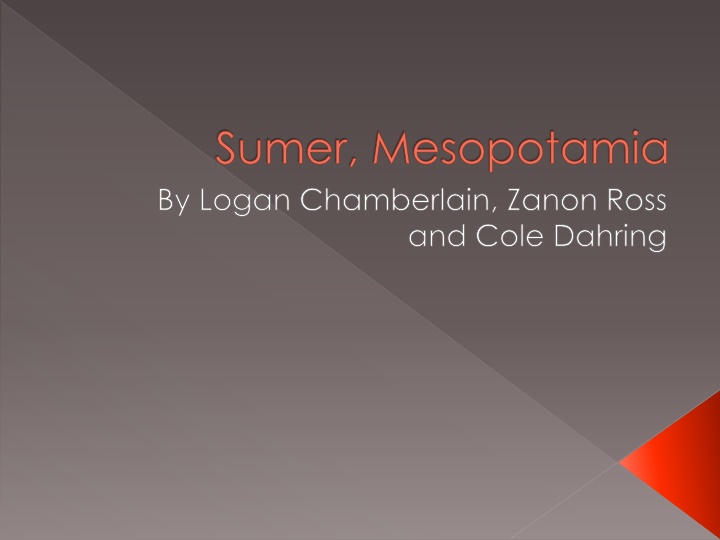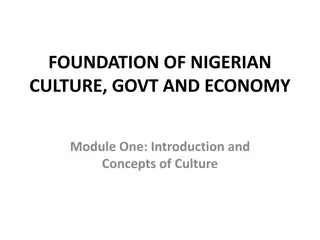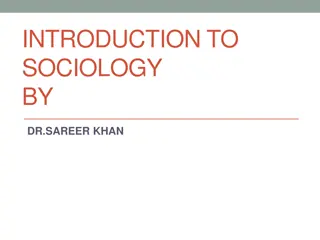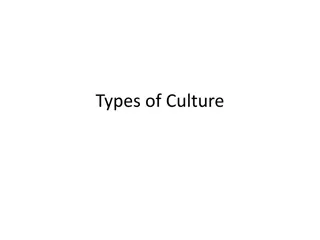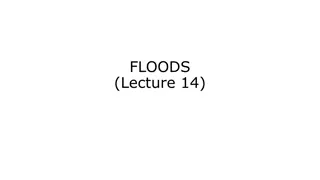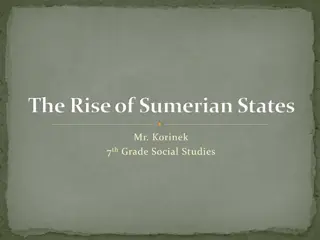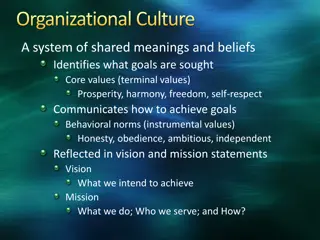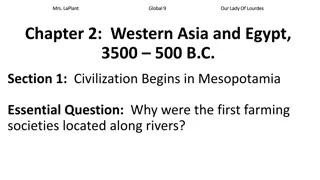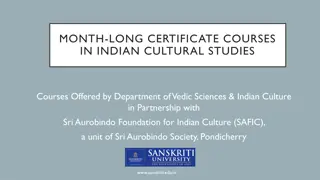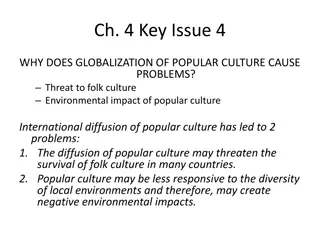Insights into Sumerian Culture
Uncover the political, economic, social, and technological facets of Sumerian civilization. Discover their religious beliefs, interactions with the environment, and advancements in arts and sciences. Delve into the structured social hierarchy and the innovative technologies developed by the Sumerians. Explore how their economy thrived on agriculture and trade.
Download Presentation

Please find below an Image/Link to download the presentation.
The content on the website is provided AS IS for your information and personal use only. It may not be sold, licensed, or shared on other websites without obtaining consent from the author.If you encounter any issues during the download, it is possible that the publisher has removed the file from their server.
You are allowed to download the files provided on this website for personal or commercial use, subject to the condition that they are used lawfully. All files are the property of their respective owners.
The content on the website is provided AS IS for your information and personal use only. It may not be sold, licensed, or shared on other websites without obtaining consent from the author.
E N D
Presentation Transcript
Sumer, Mesopotamia By Logan Chamberlain, Zanon Ross and Cole Dahring
Political The States of Sumer were seemed to be ruled by kings. Their job included military and religious responsibilities. They were ruled by kings but it seemed like they had a form of democracy, because they elected officials to run government
Interaction w/ Environment Depended on rivers to sustain agriculture, not enough water for dry farming Was located in Fertile Crescent which created great agriculture
Religion We don t know exactly what there religion was but we believe that they believed and gods but also animism. Animism defined by thefreedicti- onary.com is the belief in the existence of individual spirits that inhabit natural objects and phenomena. Every city had its own patron god or goddess, but all believed in four main gods.
Arts and Sciences made cave painting of animals statues of religious symbols objects of state, tablets recording taxes personal objects, objects that people treasured
Technology Invented seeder plow Invented cuneiform Developed a means of irrigation Developed a form of sanitation of water
Economics Paid taxes in the form of goods Such as bundles of reed and maize Agricultural people People sold goods and agricultural products Sold lumber
Social Structure Slaves are on the bottom Commoners are next Then merchants and artisans Then scribes Next is priests Finally the king is the highest person in social order
http://www.youtube.com/watch?v=84y2q4giihY 11 September 2012 <http://www.dl.ket.org/humanities/connections/class/ancient/mesopart.htm>. 11 September 2012 <http://www.slideshare.net/coldcanada/mesopotamian-social-structure- 11827004>. Ancient Mesopotamia: Science & Inventions. 12 September 2012 <http://oi.uchicago.edu/OI/MUS/ED/TRC/MESO/science.html>. Strayer, Robert W. Ways of he World. Boston: Bedford, St. Martins, 2011. Zantonavitch, Kyrel. Sumerian Philosophy. 12 September 2012 <http://rebirthofreason.com/Articles/Zantonavitch/Sumerian_Philosophy.shtml>.
